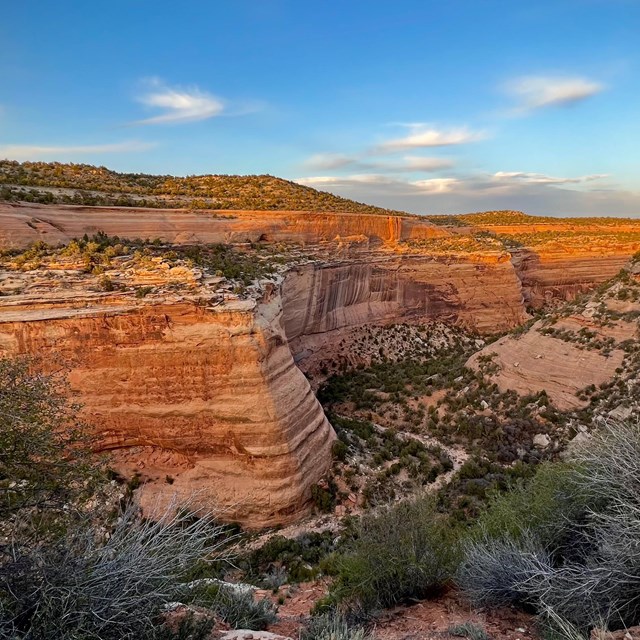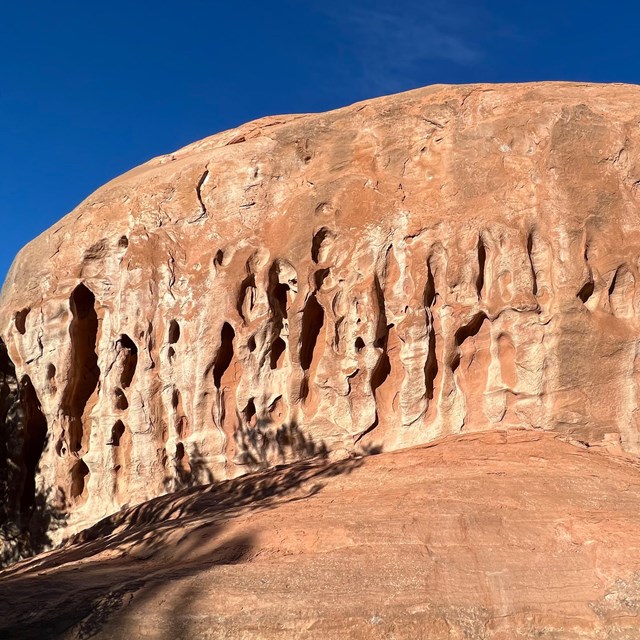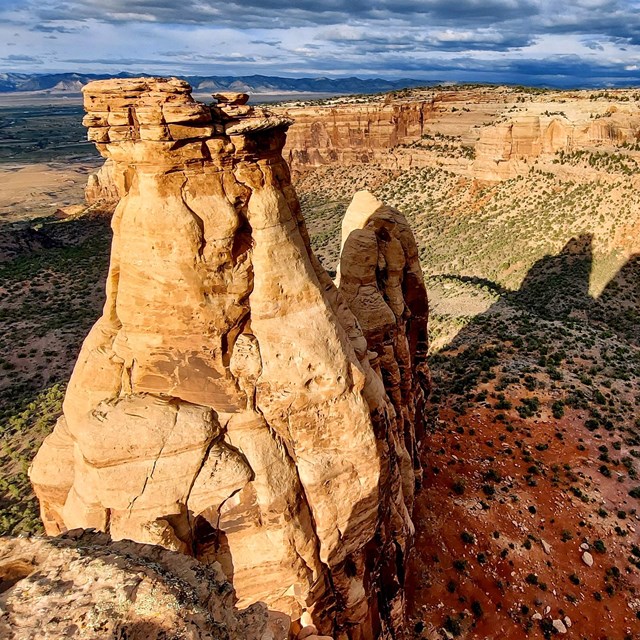Geology is the main reason Colorado National Monument was preserved. Here are canyon cliffs shaped across millions of years, and rock layers that span billions of years. Erosion continues to change this landscape of sandstone cliffs with each storm.
The rock layers here connect many neighboring National Park Service units. The Precambrian rock layer in our canyon bottoms is on full display at Black Canyon of the Gunnison National Park. The smooth Entrada sandstone along Rimrock Drive is the main arch-forming layer at Arches National Park. The Morrison formation in our highlands also produces fossils at Dinosaur National Monument. The geology here connects stories from across the Colorado Plateau and the planet.
The story of our local landscape is here, available for reading by those who choose to learn how to read it. The canyon walls are like a newsfeed, with the most recent posts at the top and older information as you scroll down. Like many websites, some of the links are broken or missing. The rock layers, even the missing ones, explain what this landscape was like across the eons. What story will the rocks tell in some distant future of our human time in this place?
For more data-driven information about the Monument, check out our page in the Geodiversity Atlas. You'll find datasets, maps, reports, posters, and more.







